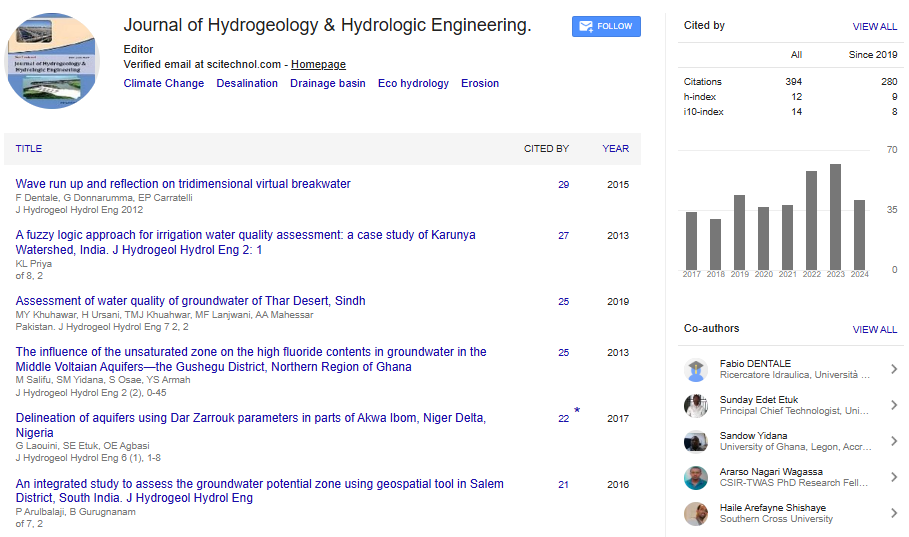Research Article, J Hydrogeol Hydrol Eng Vol: 3 Issue: 2
Numerical Modeling of Tsunami-Like Solitary Wave Impinging and Overtopping a Seawall through SPH Schemes by Considering the Effect of Entrapped Air
| Seyed Mohammad Taghi Azimi, Parviz Ghadimi* and Hashem Nowruzi |
| Department of Marine Technology, Amirkabir University of Technology, Tehran, Iran |
| Corresponding author : Dr. Parviz Ghadimi Department of Marine Technology, Amirkabir University of Technology, Hafez Ave, No 424, P.O. Box 15875- 4413, Tehran, Iran Tel: (+9821) 64543110; Fax: (+9821) 66412495 E-mail: pghadimi@aut.ac.ir |
| Received: June 16, 2014 Accepted: August 21, 2014 Published: August 25, 2014 |
| Citation: Azimi SMT, Ghadimi P, Nowruzi H (2014) Numerical Modeling of Tsunami-Like Solitary Wave Impinging and Overtopping a Seawall through SPH Schemes by Considering the Effect of Entrapped Air. J Hydrogeol Hydrol Eng 3:2. doi:10.4172/2325-9647.1000114 |
Abstract
Numerical Modeling of Tsunami-Like Solitary Wave Impinging and Overtopping a Seawall through SPH Schemes by Considering the Effect of Entrapped Air
In the current study, Tsunami-like solitary wave impinging and overtopping an impermeable seawall is numerically simulated. Tsunami-like solitary wave breaking has been considered before reaching an impermeable trapezoidal seawall of a particular slope. Smooth Particle Hydrodynamic (SPH) as a Lagrangian mesh-less method is implemented for the simulation purposes. In order to validate the numerical model, the obtained solitary wave profile is compared against existing experimental and analytical data and good compliance is displayed. Based on the computational results, high accordance is also achieved between the numerically found wave structure and the geometry of experimental waves. Furthermore, nature of breaking of Tsunami-like solitary wave and its overtopping on seawalls is examined. Comparison of these results against experimental data as well as water surface profiles by RANS method indicate greater consistency of SPH results with the experimental findings. Also, computational results related to time histories of dynamic pressure from SPH simulations are presented and compared with experimental data and numerical models, and good agreement is achieved for the peak pressure.
 Spanish
Spanish  Chinese
Chinese  Russian
Russian  German
German  French
French  Japanese
Japanese  Portuguese
Portuguese  Hindi
Hindi 
